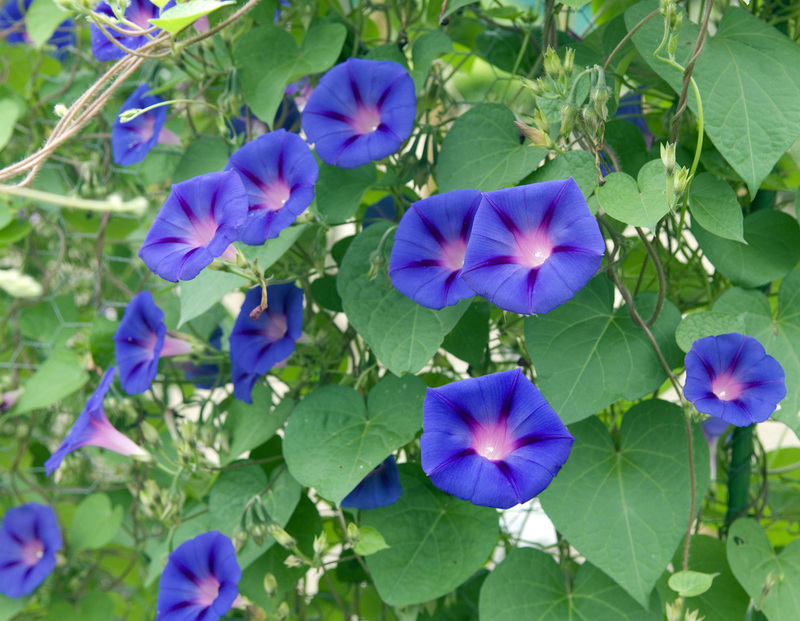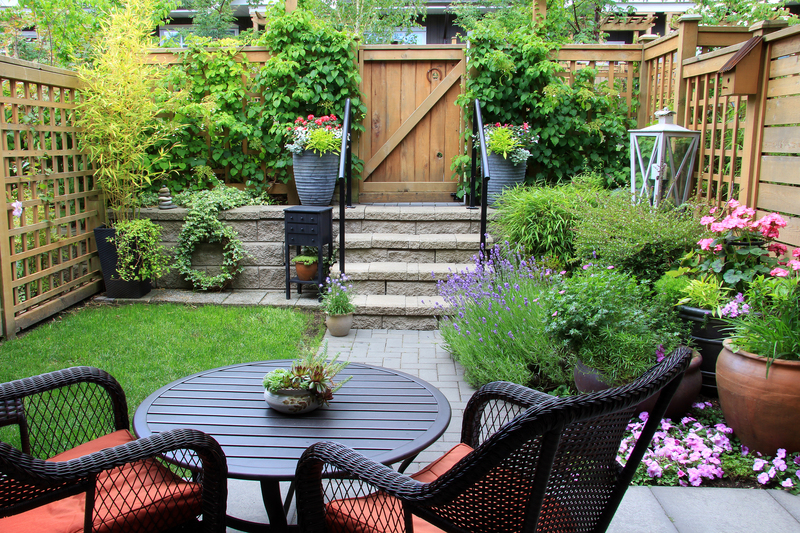Conquer Invasive Weeds with 3 Practical Tips
Posted on 25/09/2025
Conquer Invasive Weeds with 3 Practical Tips: A Complete Guide
Are invasive weeds taking over your garden or yard? Battling these unwelcome guests can feel like an endless struggle. But with the right knowledge and effective weed management strategies, you can conquer invasive weeds and reclaim your green space. Whether you're dealing with stubborn crabgrass, relentless bindweed, or aggressive Japanese knotweed, this comprehensive article will empower you to identify, tackle, and prevent invasive weed infestations.

What Are Invasive Weeds?
Invasive weeds are non-native plants that spread rapidly and outcompete native vegetation. Unlike regular garden weeds, these aggressive invaders disrupt ecosystems, reduce biodiversity, and damage property values. Their tenacity makes them some of the most difficult pests to control, yet practical and eco-friendly solutions exist.
Why Invasive Weeds Are a Serious Problem
- Choke out native species: Invasive weeds quickly cover large areas, robbing native plants of sunlight, water, and nutrients.
- Accelerated spread: Many have high seed production or reproduce via underground stems (rhizomes).
- Pest & disease magnet: Dense weed patches can provide havens for pests and diseases that threaten other plants.
Common Examples of Invasive Weeds
- Japanese Knotweed (Fallopia japonica): notorious for breaking through concrete and brickwork.
- Purple Loosestrife (Lythrum salicaria): invades wetlands and riverbanks, altering wildlife habitats.
- English Ivy (Hedera helix): smothers trees, fences, and ground covers, creating monocultures.
- Giant Hogweed (Heracleum mantegazzianum): phototoxic sap presents health hazards to humans and animals.
Understanding the dangers posed by invasive plants is the first step. But how can you take back control? Let's move on to 3 practical tips to manage and conquer invasive weeds -- tools every homeowner, gardener, or land manager can use.
Tip #1: Identify and Monitor Invasive Weeds
Early detection is the foundation of effective invasive weed management. If you can recognize invasive weed species before they establish, you'll save countless hours and resources down the road.
How to Properly Identify Invasive Weeds
- 1. Get Familiar with Local Invaders: Every region has its own most problematic invasive weeds. Reach out to your local cooperative extension, conservation authority, or agricultural office for a list of notorious species in your area.
- 2. Use Plant Identification Guides: Invest in a weed identification book or download plant ID apps. Pay close attention to leaf shape, flower structure, growth habit, and root systems.
- 3. Check for Unusual Vigour: Invasive weeds often grow faster, denser, or taller than surrounding plants. Watch out for rapid spread, especially in disturbed soils or neglected areas.
Regular monitoring of your garden, lawn, or property lines is essential. Set aside time every 1-2 weeks to walk your property, inspect beds, and check for any new weed growth. Early intervention is much more effective and less labor-intensive.
Tip #2: Remove and Control Invasive Weeds Effectively
When it comes to removing invasive weeds, a combination of strategies works best, depending on the species and scale of the infestation. Let's explore the most practical and sustainable methods to eliminate invasive weeds:
Manual Removal: Pulling and Digging
- Pull by Hand: For small outbreaks or when the soil is moist, wearing gloves, grab low on the stem and gently pull to remove the entire root system. For tough-rooted perennials, use a garden fork to loosen the soil around the plant.
- Dig Up Rhizomes and Roots: Plants like Japanese knotweed and Canada thistle regenerate from root fragments. Carefully excavate the entire root mass and dispose of it in a way that prevents re-sprouting (never compost invasive weed roots or seeds).
Mulching to Suppress Weeds
- Organic Mulch: Apply a thick (3-5 inch) layer of wood chips, bark mulch, straw, or shredded leaves around desirable plants. This smothers weed seedlings and retains moisture.
- Landscape Fabric: For persistent or widespread invasions, install landscape fabric under a fresh layer of mulch. This creates a tough barrier to block sunlight and prevent weed emergence.
Pro Tip: Check existing mulched areas periodically, as some aggressive weeds will root atop mulch if seeds blow in!
Selective Use of Herbicides
Herbicides can be a useful last resort for serious infestations, but they must be applied responsibly to protect neighboring vegetation, wildlife, and waterways.
- Choose Targeted Herbicides: For persistent woody or perennial weeds, use an herbicide labeled for the specific invasive plant. Spot-treat individual weeds to minimize environmental impact.
- Follow Instructions: Always read the label and wear appropriate protective gear. Apply on calm, dry days and never near water sources.
Disposal of Invasive Weed Waste
- Bag and Bin: For seeds, roots, and stems, use heavy-duty garbage bags. Seal and discard them with household trash.
- Do Not Compost: Home compost piles usually don't reach temperatures high enough to kill invasive seeds and roots.
By applying these practical weed removal techniques, you dramatically reduce invasive plant populations and their ability to rebound the following season.
Tip #3: Prevent Future Invasive Weed Outbreaks
Prevention is the most powerful weapon in your fight to conquer invasive weeds. Stopping invasive species before they become established will save you tremendous time and money.
Maintain Dense and Healthy Landscapes
- Keep Plants Close Together: Dense plantings create a living barrier, leaving less bare soil for weed seeds to germinate.
- Choose Ground Covers: Fill exposed soil with perennial ground covers like creeping thyme, clover, or native grasses which crowd out invaders.
- Fertilize & Water Wisely: Healthy, vigorous plants are better able to compete with (and shade out) unwanted weeds.
Use Barriers to Stop Weed Spread
- Install Edging: Physical barriers such as metal, plastic, or stone edging can keep invasive weeds from spreading between beds or onto your property from neighboring land.
- Mulch Borders: Reapply mulch regularly, especially along fences and paths that are weed-prone.
Monitor and Act Quickly
- Routine Inspections: Walk your property after windy storms, heavy rain, or any disturbance. Uproot any new arrivals before they become established.
- Participate in Community Initiatives: Many towns have "weed pull" days or educational seminars to help homeowners recognize and eradicate local invasive weeds.
Ultimately, persistence beats resistance - by staying proactive, you keep invasive plants in check.
Understanding Integrated Weed Management
The most successful way to conquer and control invasive weeds is through Integrated Weed Management (IWM). This approach combines cultural, mechanical, biological, and chemical methods to provide:
- Long-term suppression of invasive species
- Environmentally responsible weed control
- Safeguarding native plants and soil health
Whether you're a backyard gardener or managing a larger landscape, employing multiple tactics will yield the best results over time.

Frequently Asked Questions on Conquering Invasive Weeds
Can vinegar or boiling water kill invasive weeds?
Both can damage soft, green weeds above-ground, but their effects are temporary and may not kill the roots of established invasive plants. For woody or deeply rooted weeds, manual extraction or targeted herbicides are more effective and long-lasting.
How often should I check my property for new infestations?
Every 1-2 weeks during the growing season is ideal, and more often after weather events that disturb soil or vegetation.
Is it possible to eradicate invasive weeds completely?
Complete eradication is challenging, especially over large areas. However, regular monitoring, prompt removal, and preventive methods drastically reduce populations and protect your landscape over time.
Summary: Your Action Plan to Conquer Invasive Weeds
- Identify problem species and stay vigilant in monitoring your property year-round.
- Remove invasive weeds with the right combination of manual, mechanical, and selective chemical strategies.
- Prevent future outbreaks with dense plantings, mulches, and routine inspections.
The battle against invasive weeds is ongoing, but it can be won with the right strategies and commitment. By following these three practical tips, you'll reclaim your outdoor space, support native plant life, and enjoy a healthy, beautiful landscape free of noxious weeds.
Ready to take back your lawn and garden? Start today by walking your property and putting these conquer invasive weed tips into practice. Share your experience or questions in the comments below!

